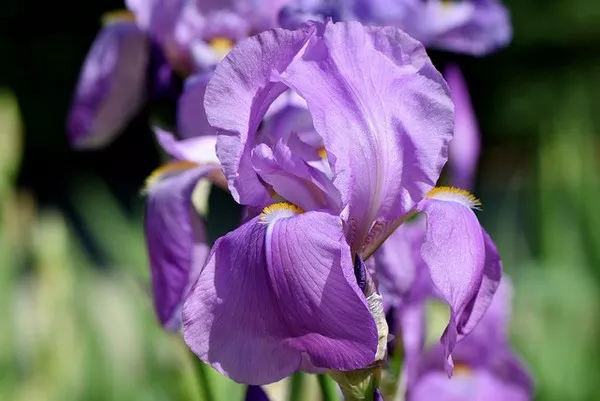Iris plants are renowned for their stunning blooms that grace gardens in various colors and sizes. However, once the flowering season comes to an end, it’s important to know how to care for your iris plants to ensure their continued health and vitality. In this article, we’ll guide you through the steps to take after your irises have finished flowering, ensuring that your garden remains a vibrant haven year after year.
Deadheading the Spent Blooms
1. Removing Faded Flowers
Once the irises have completed their blooming cycle, the first step is to remove the faded and spent flowers. This process is known as deadheading. Using a pair of clean and sharp gardening shears, carefully snip off the flower stalks just below the spent blooms. This not only tidies up the appearance of the plant but also prevents the formation of seed pods that can divert energy from the rhizomes.
2. Promoting Energy Conservation
Deadheading serves a crucial purpose beyond aesthetics. By removing the spent blooms, the plant’s energy is redirected from seed production back into the rhizomes – the underground storage structures of the iris. This energy conservation will help strengthen the rhizomes and prepare the plant for the next growing season.
Trimming and Pruning
1. Cutting Back Foliage
After the flowering phase, the iris foliage might appear ragged or brown. It’s essential to trim the leaves to promote better plant health. Using clean gardening shears, trim the damaged or discolored foliage, leaving only the healthy green leaves. Make sure to leave about one-third of the foliage intact to allow the plant to photosynthesize and store energy.
2. Preventing Disease
Trimming and removing damaged foliage not only enhances the overall appearance of the iris bed but also helps prevent the spread of diseases and pests. Proper sanitation practices can go a long way in maintaining the health of your iris plants.
Fertilizing and Nourishing
1. Applying Balanced Fertilizer
Post-flowering is an ideal time to give your iris plants a nutrient boost. Choose a balanced, slow-release fertilizer with an N-P-K ratio that suits your soil type. Applying fertilizer during this period helps replenish the nutrients that the plants utilized during the blooming season and prepares them for their next growth cycle.
2. Fertilizing Frequency
Apply the fertilizer according to the manufacturer’s instructions. Generally, a single application after flowering is sufficient. Avoid over-fertilizing, as this can lead to excessive foliage growth at the expense of flower production.
Dividing and Transplanting
1. Assessing Clump Size
Over time, iris plants can become overcrowded, leading to reduced blooming and increased vulnerability to disease. If you notice your irises producing fewer flowers or forming large clumps, it’s time to consider dividing and transplanting them.
2. Dividing Process
To divide iris plants, carefully dig up the entire clump, taking care not to damage the rhizomes. Gently separate the rhizomes by hand or with a clean knife, ensuring that each division has healthy roots and leaves.
3. Replanting
Replant the divisions in a well-prepared bed, spacing them adequately to allow for proper air circulation. Make sure the tops of the rhizomes are just above the soil surface. Water the newly transplanted irises thoroughly to help them establish.
Mulching and Winter Protection
1. Applying Mulch
As the growing season comes to a close, consider applying a layer of organic mulch around the base of your iris plants. Mulch helps retain moisture, suppress weed growth, and provide insulation to the roots during winter.
2. Winterizing
In colder climates, it’s essential to prepare your iris plants for the winter months. After the first hard frost, cut back the foliage to a few inches above the ground. This minimizes the risk of disease and prevents the foliage from becoming a breeding ground for pests.
3. Protective Covering
To provide additional protection, you can cover the iris bed with a layer of straw or evergreen branches. This safeguards the plants from extreme temperature fluctuations and frost heaving.
Conclusion
Proper post-flowering care for your iris plants is crucial for their overall health and future blooming success. By following these essential steps – from deadheading spent blooms to dividing and protecting your irises for winter – you’ll ensure that your garden remains a vibrant and inviting haven, with irises that continue to dazzle year after year. Remember that each action you take contributes to the longevity and vitality of your cherished iris plants.


